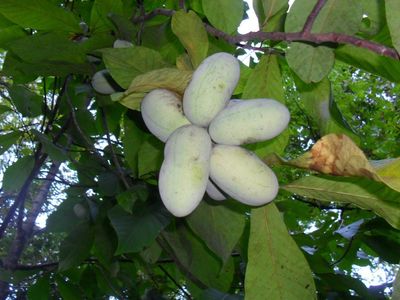Two Common Diseases of Pawpaw Trees
Powdery mildew usually isn’t deadly, but it can stunt growth of new shoots and will certainly affect the appearance of the tree. Powdery mildew is easy to recognize by powdery, whitish gray areas on young leaves, buds, and twigs. Affected leaves may take on a wrinkled, curled appearance. Black spot on pawpaw is recognized by masses of tiny black spots on the leaves and fruit. Black spot, a fungal disease, is most common in cool weather or following a period of unusually damp weather.
How to Treat a Sick Pawpaw Tree
Treating a diseased pawpaw is necessary if your pawpaw tree is suffering from black spot or powdery mildew. The best treatment is to simply prune the tree to remove damaged growth. Dispose of the affected plant parts carefully. Sanitize cutting tools immediately, using a 10 percent bleach solution, to prevent spread of disease. Sulphur or copper-based fungicides may be effective when applied early in the season. Reapply regularly until new shoots no longer appear.
Nutrition and Pawpaw Illnesses
When it comes to treating a diseased pawpaw tree, maintaining proper nutrition is of utmost importance. Pawpaw trees that lack adequate potassium, magnesium, and phosphorus are more likely to suffer pawpaw diseases such as powdery mildew and black spot. Note: There is no way to know your soil is nutrient poor without a soil test. This should always be the first step in treating a diseased pawpaw. Potassium: To improve the potassium level, add potassium sulphate, which promotes strong growth and disease resistance while improving water retention. Apply the product when the soil is moist, then water in well. Granular and soluble products are available. Magnesium: Application of Epsom salts (hydrated magnesium sulfate) is an easy, inexpensive way to promote healthy pawpaw trees, as the addition of magnesium strengthens cell walls and improves uptake of other nutrients. To apply Epsom salts, sprinkle the powder around the base of the tree, then water deeply. Phosphorus: Well-rotted chicken manure is a great way to boost the level of phosphorus in the soil. If the deficit is considerable, you can apply a product known as rock phosphate (colloidal phosphate). Refer to the recommendations on the package for specific information.
